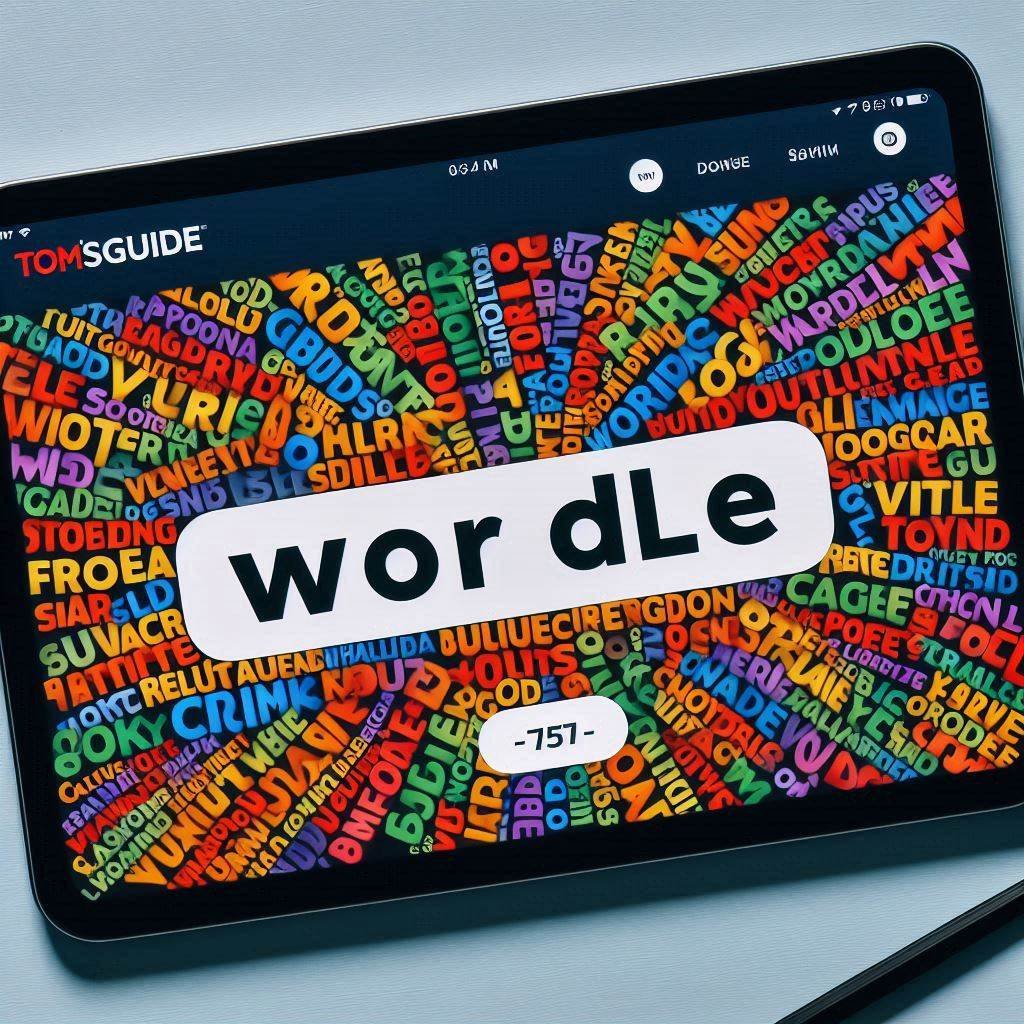Introduction
Wordle has taken the world by storm, captivating players with its simple yet addictive gameplay. It’s a daily word puzzle where you get six attempts to guess a five-letter word. The appeal lies in its logic, vocabulary, and deductive reasoning balance. “Tom’s Guide Wordle” has emerged as a trusted resource for those looking to improve their Wordle game. It provides tips, strategies, and insights that can make a difference between solving the puzzle and staring at a screen in frustration. Whether you’re new to Wordle or a seasoned player looking to up your game, this guide deepens into strategies, explains common pitfalls, and provides actionable insights to boost your puzzle-solving prowess.
What Is Wordle?
Wordle is a browser-based word puzzle that requires players to guess a five-letter word within six attempts. Each guess provides feedback in the form of colored tiles:
- Green: The letter is correct and in the right position.
- Yellow: The letter is in the word but not in the right position.
- Gray: The letter is not in the word at all.
The simplicity of Wordle has contributed to its mass appeal. It doesn’t require an account or any downloads, and you can play only one puzzle per day, adding to its allure.
The Role of “Tom’s Guide Wordle”
Tom’s Guide Wordle has become a go-to hub for enthusiasts. From decoding daily puzzles to helping players understand patterns, this guide ensures you’re equipped with the tools needed to approach each puzzle with confidence. The tips and tricks compiled by Tom’s Guide are perfect for casual players and word game fanatics alike.

Tips to Ace Wordle
- Start with Strong Words
Always begin with words that contain common vowels and consonants. Examples include “raise”, “store”, and “notes.” These words maximize your chances of uncovering vowels and frequently used letters in English. - Analyze Patterns
Look for patterns in your guesses. If you’ve identified green letters, think about how words are typically structured. For example, if “E” is green in the last position, consider common endings like “-INE,” “-ORE,” or “-ATE.” - Eliminate Letters Wisely
Use guesses strategically to eliminate letters. Even if you’re certain about some letters, making guesses to rule out others can help narrow your options. - Use Unique Guesses
Avoid repeating letters in your early guesses. For instance, instead of using “sweet” (repeating “e”), opt for “stone” or “water” to cover more possibilities. - Be Patient
Wordle is a game of logic and deduction. Resist the urge to rush through guesses, and instead, take time to think about the possible combinations based on the feedback you receive.
Common Wordle Pitfalls
1. Ignoring Feedback
Many players forget to use the feedback provided by colored tiles effectively. Green tiles are the key to forming the word, and yellow tiles indicate positions you should experiment with.
2. Overthinking
Some players get stuck overcomplicating simple puzzles. If you’re stuck, try to reset your thought process and consider simpler word structures.
3. Repeating Letters Too Soon
Avoid using guesses with the same letter in multiple positions unless you’re confident it’s the solution.
Advanced Strategies for Wordle Pros
1. Letter Frequency Analysis
English has common letter frequency patterns. Vowels like “A,” “E,” and “O” are highly used, as are consonants like “T,” “R,” and “S.” Use this knowledge to your advantage.
2. Identify Unusual Letter Combinations
If the puzzle seems challenging, consider less common combinations like “Q” and “U” or double letters like “LL” and “EE.”
3. Build a Word Bank
Keep a mental or written list of words that commonly appear in puzzles. Practice makes perfect, and this habit helps you recognize solutions faster.
Quick Facts About Wordle
| Category | Detail |
|---|---|
| Developer | Josh Wardle |
| Launch Year | October 2021 |
| Word Length | Five letters |
| Daily Attempts | One puzzle per day |
| Popular Strategies | Start with vowel-heavy words |
| Accessibility | Free to play; no app required |

The Science Behind Wordle Success
Wordle is not just a game of luck; it’s a test of cognitive skills, pattern recognition, and vocabulary. The process of guessing and analyzing involves the brain’s problem-solving regions, particularly the prefrontal cortex. As you evaluate each guess, you’re engaging in logical reasoning and decision-making, making Wordle a mental workout. Studies have shown that games like Wordle can enhance memory and boost cognitive function over time. This is why many players feel a sense of accomplishment when they crack the day’s puzzle—it’s a satisfying blend of effort and intellect.
Why Wordle Became a Viral Phenomenon
The appeal of Wordle lies in its simplicity and its shareability. Unlike many modern games filled with ads, microtransactions, or complicated rules, Wordle offers a clean, minimalist experience. The ability to play one puzzle a day creates anticipation while sharing results through social media fosters a sense of community. Seeing green and yellow tiles pop up on your Twitter feed became a daily occurrence in 2022, creating a global wave of friendly competition. This combination of daily engagement and social connection has solidified Wordle as a cultural phenomenon.
How to Develop a Winning Mindset
Mastering Wordle isn’t just about knowing words; it’s about staying calm and focused. A winning mindset involves patience and adaptability. If your first guess doesn’t reveal much, don’t panic. Instead, use it as a learning opportunity. Develop a habit of pausing after each guess to review the feedback. Ask yourself questions like, “What does this tell me about the possible positions of the yellow letters?” or “Which letters can I confidently rule out?” Staying composed under pressure often separates the great players from the average ones.
How Tom’s Guide Wordle Supports Learning
Tom’s Guide Wordle isn’t just about solving the day’s puzzle—it’s also an educational tool. By offering insights into the structure of the English language, the guide helps players expand their vocabulary. It also provides historical insights, such as the origin of specific five-letter words and their usage trends. This blend of puzzle-solving and linguistic education makes Wordle a productive way to spend time. Over weeks and months, players often notice improvements in their word recognition and spelling skills, thanks to consistent practice guided by expert tips.
Wordle Variants and Spin-Offs
As Wordle’s popularity grew, so did its variations. Fans created spin-offs like Quordle (guessing four words simultaneously), Dordle (two words at once), and even Absurdle, which actively works against the player by changing the word as you guess. Each variant adds its twist, challenging players to adapt their strategies. Tom’s Guide Wordle often explores these variants, offering strategies tailored to the unique challenges they present. Trying these spin-offs can deepen your appreciation for the original Wordle while testing your skills in new and exciting ways.
The Role of Wordle in Everyday Life
Tom’s Guide Wordle isn’t just a game; for many, it’s become a daily ritual. Solving the puzzle over morning coffee or during a lunch break provides a mental reset. It encourages players to think critically, boosting focus and productivity. Families and friends often bond over the game, exchanging strategies and celebrating victories together. Its accessibility means that anyone, regardless of age or skill level, can join in the fun. This universality has contributed to its enduring popularity and its place in modern pop culture.

Community Contributions to Wordle’s Success
The Wordle community is vibrant and supportive, with players worldwide sharing tips, results, and even fan-made tools to enhance the experience. Websites dedicated to Wordle hints and solutions, such as Tom’s Guide Wordle, thrive on user feedback and interaction. These platforms often feature discussions about the day’s puzzle, with players debating strategies or sharing their unique solving paths. This collaborative spirit has helped sustain interest in Wordle, transforming it from a simple game into a shared global hobby.
FAQs About Tom’s Guide Wordle
Q1: How does “Tom’s Guide Wordle” differ from other Wordle guides?
Tom’s Guide Wordle stands out for its in-depth strategies, daily solutions, and expert-backed tips tailored for players at every skill level.
Q2: Can beginners benefit from Tom’s Guide Wordle?
Absolutely! The guide is designed for both beginners and advanced players, breaking down strategies in an easy-to-understand format.
Q3: What are the most effective starting words?
Words like “raise,” “notes,” and “store” are effective starters due to their balance of vowels and common consonants.
Q4: Does Tom’s Guide Wordle provide daily solutions?
Yes, the guide often includes daily puzzle solutions along with explanations for each step to help players learn and improve.
Q5: Are there tools to assist with Wordle?
Tom’s Guide Wordle also recommends tools like anagram solvers or word generators for educational purposes but emphasizes practicing logical reasoning.
Conclusion
“Tom’s Guide Wordle” has become a cornerstone for word game enthusiasts, offering valuable tips and detailed strategies to solve puzzles with ease. By focusing on letter frequency, starting with vowel-rich words, and learning from feedback, players can elevate their Wordle skills. Whether you play for fun or take the game more seriously, this guide ensures that every move you make is informed and strategic.
Remember, Wordle isn’t just about finding the right word; it’s about the journey, the logic, and the thrill of discovery. With Tom’s Guide Wordle at your side, you’re well on your way to becoming a Wordle pro!
Also read…High-Performance Fashion 6 Cell 10.8V 4001mAh-5000mAh Replacement Laptop Battery for ASUS





